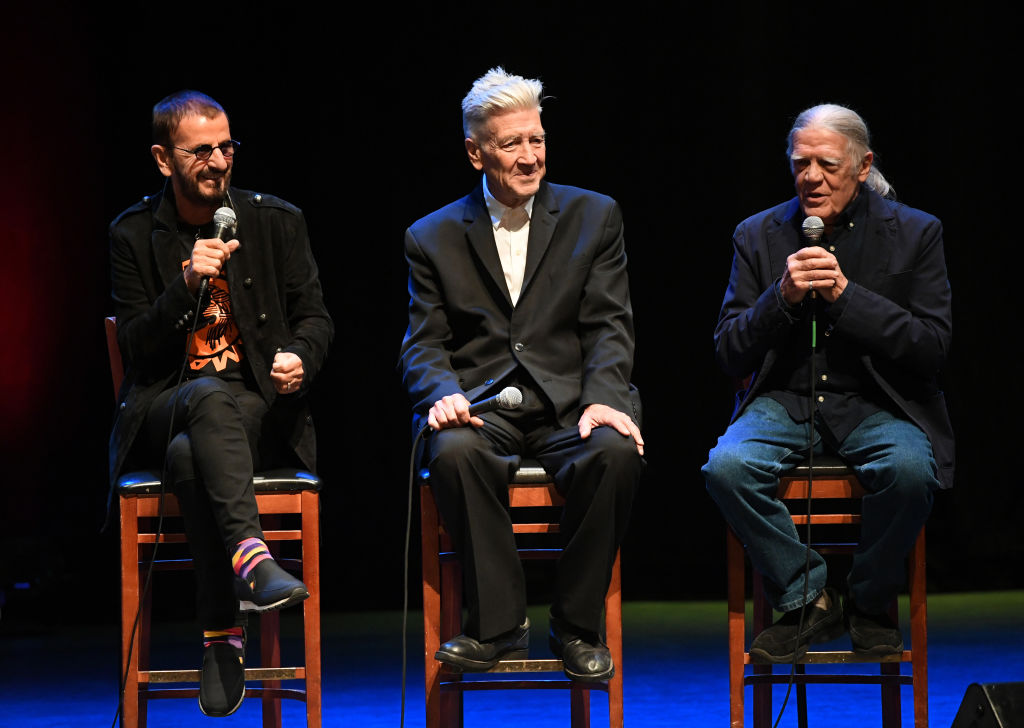
Rick Diamond/Getty Images for Americana Music

Audio By Carbonatix
Enmeshed in the Los Angeles music scene in the 1960s, Henry Diltz, a member of the Modern Folk Quartet, never planned on becoming an iconic photographer. He followed his friend’s move, bought a camera in a thrift store, and started snapping shots of his friends. The rest, as they always say, is history.
Diltz, whose many credits include Official Woodstock Photographer, is spending two nights at The Musical Instrument Museum, October 13 and 14, presenting Behind the Lens—California Dreamin’.
Let’s talk about some of the images captured by this legend. The cover of the Doors’ “Morrison Hotel” record (1969), Paul and Linda McCartney on the cover of Life Magazine (1971), Jimi Hendrix at Woodstock playing “The Star Spangled Banner” in 1969, Kurt Cobain in action at the Forum in Los Angeles in ‘93 and how can we not mention Diltz’s recent album cover for the upcoming Spinal Tap record, “Spinal Tap: The End Continues,” which mirrors his 1969 cover of Crosby, Stills & Nash’s debut release.
At the event, he’ll give attendees a visual and narrative journey through his legendary work with bands such as the Doors, Jackson Browne, Joni Mitchell, James Taylor, and Crosby, Stills & Nash. That’s really just a handful of performers who have been on the other side of his lens. Diltz is loaded with great stories, and he’s gonna tell ‘em.
This year, make your gift count –
Invest in local news that matters.
Our work is funded by readers like you who make voluntary gifts because they value our work and want to see it continue. Make a contribution today to help us reach our $30,000 goal!

“When I was a musician and living in Laurel Canyon (in the 1960s), I would photograph my friends for the fun of it. All my friends were pretty much musicians, too. I’d be out and about visiting people, and I would take a few pictures everywhere I went. Then, on the weekend, we’d have a slide show,” Diltz recalls. In his band, Diltz played the five-string banjo and sang, creating harmonies with his bandmates.
“I loved it when my friends said, ‘Oh, I didn’t even know you took that picture,’” he adds. He was also snapping pictures of plenty of other things that caught his attention. He found inspiration everywhere. “I remember going to Disney and seeing someone eating a hot dog, and then I’d take a picture of that somebody eating, then I’d have an eating series,” he laughs. “I’d take pictures of good friends reading, and then I’d have a reading series. I had about 50 series like that.”
The slide shows became a regular happening. “The people I was photographing, like Stephen Stills, Mama Cass and Neil Young, started using the pictures for publicity or songbooks and eventually album covers — so it kind of accidentally morphed into that.”
I ask Diltz if he ever thought, in the moment, that the scene he was a part of would become a part of musical history that would be endlessly regarded. For him, he was just ‘finding his jones,’ a slang term dating back to those same days meaning to find and pursue the things you truly love.
“It was just my framing jones. I like to frame things. I like to look. I’m a visual kind of guy and a curious guy, so I just like to frame things up — it makes me feel balanced. If I frame something up and take a picture, it makes me go, ‘ahhhh,’ It’s a satisfaction.”
“Nothing was ever posed. I was taking pictures so we could have some fun at the slideshow events. I was trying to take interesting, unusual, funny pictures, but nothing was ever posed. I was just watching my friends, but I never thought, ‘Boy, one day all of these people will be famous,’” he laughs. “That just happened one by one.”

Kevin Winter/Getty Images for ABA
That organic approach to his process has remained. He’s never studied photography or taken a class. He follows his path and lets things happen. Diltz says that discovering the book “Autobiography of a Yogi” by Paramahansa Yogananda in 1965 really helped shape his perspective.
“It’s such a beautiful book about a guy who grows up and becomes a spiritual person — he is very interested in finding his guru and learning about life. It made me think, ‘Wow, people live this way; life could be like this … you can learn about people.'” He appreciates these teachings that remind you to be a student of life and that “everybody you meet is your teacher.”
The massive shift to digital from film was something that gave him pause, but only for a second.
“Of course, I was initially saying, ‘I’ll never go digital, I’m a film guy,’” Diltz says.
“Then, I picked up my friend’s Canon digital camera and looked through it and said, ‘Oh my god, it’s focusing itself, (he laughs), and it’s setting its own light reading. It was amazing.” The vision that creates the result is still all Diltz; he couldn’t resist the efficiency. “It’s just quicker and easier. It’s easy to send images to people. There are so many reasons. It’s just very handy and it’s very helpful to see what you shoot right away.”
Diltz says he is excited to share his stories and to meet people in Phoenix at the event. “I love Arizona,” he concludes.
He played in Scottsdale back in the ‘60s. If you ask him, maybe he’ll tell you about that, too.